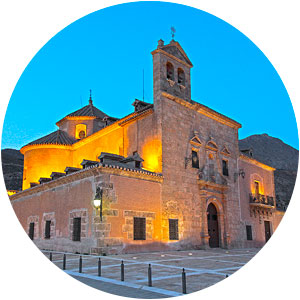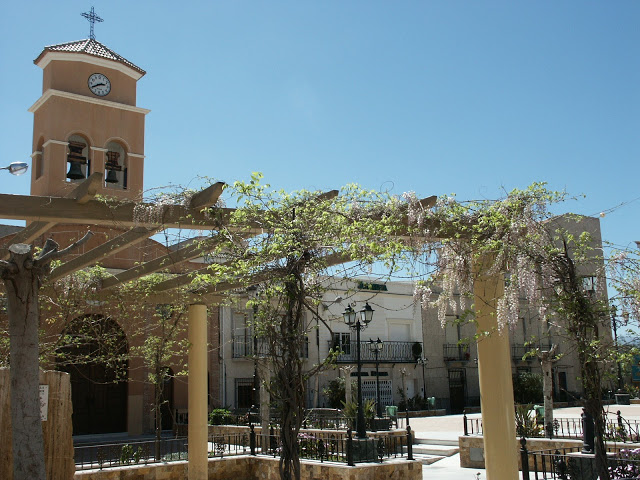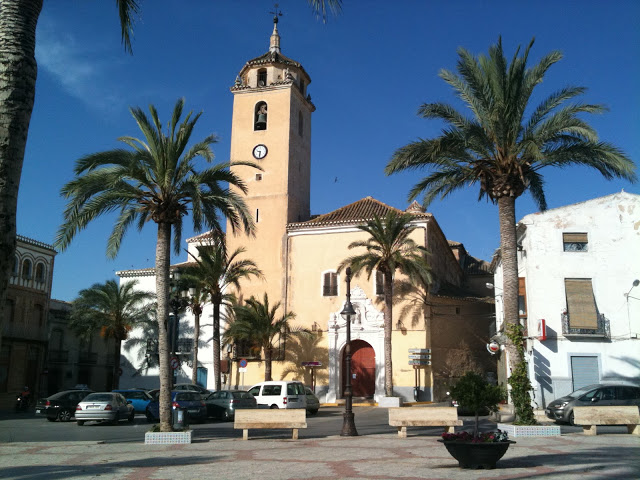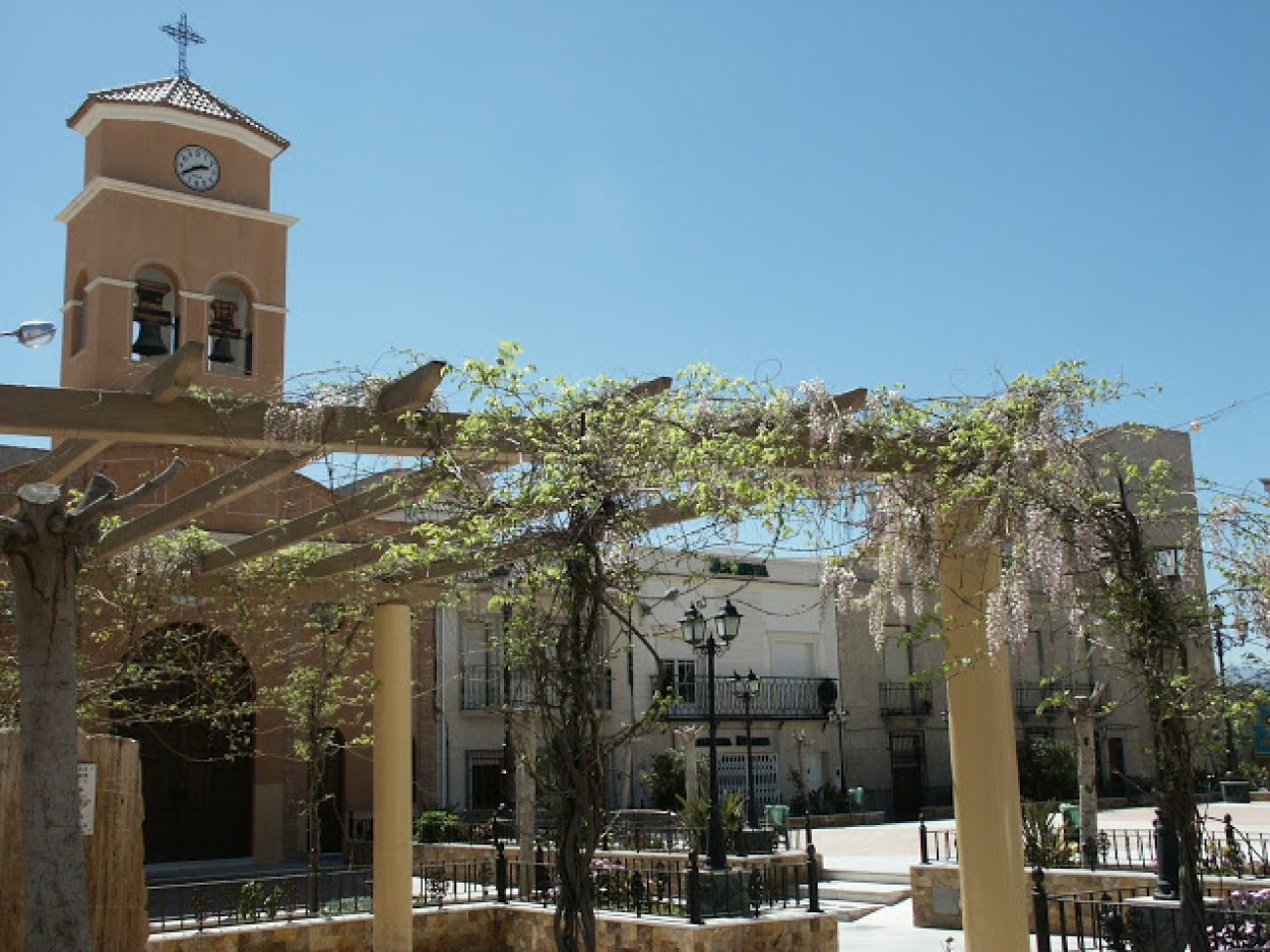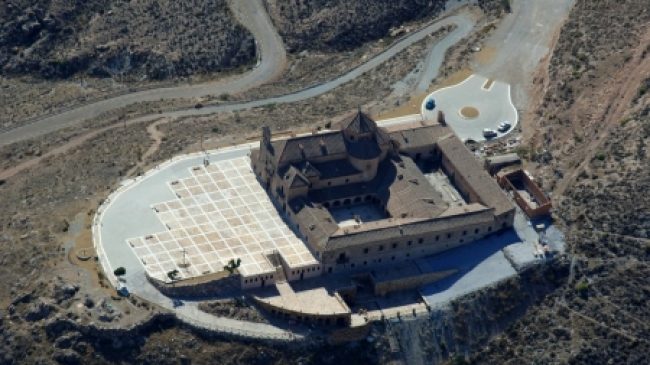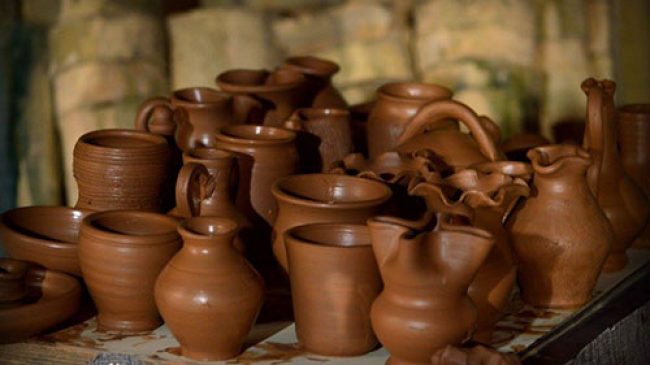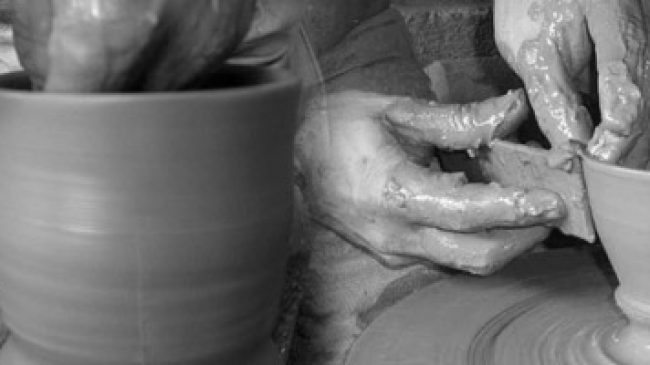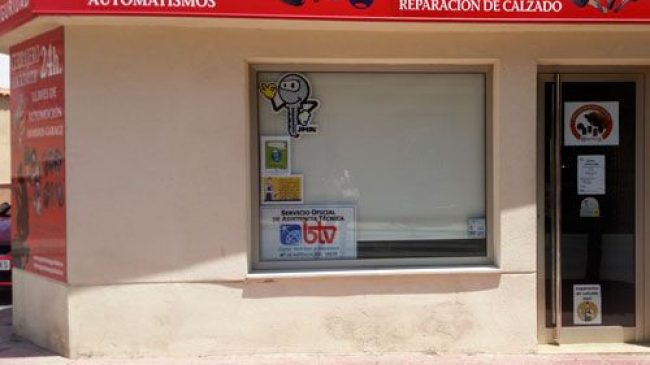WE RECOMMEND YOU…
ALBOX, MILLENARY TOWN

Millenary people, today Albox has a great merchant tradition. It is attended by numerous visitors from nearby municipalities who enjoy its well-known weekly market, the hospitality of its restaurants as well as its many services such as supermarkets, banks and shops.
The Christian tradition is well represented in Albox with the renowned Sanctuary of the Salient, with its 300 years of history, declared a Spanish Historical-Artistic Heritage since 1992 and considered one of the largest monasteries in Eastern Andalusia. The municipality also has a variety of churches and beautiful chapels such as the recently restored church of Santa María located in the People’s Square whose construction began in the sixteenth century and which is the oldest religious building in Albox.
The Hermitage and viewpoint of Santa Cruz, was founded in the 18th century on the highest hill of the town and offers wonderful views of Albox.
The Hermitage of San Antonio, also of the eighteenth century, located in the neighborhood of the same name and retaining in its interior symbolic paintings of popular type representing the Virtues (justice, strength, temperance, prudence, charity and faith).
Outside the urban area there is a varied range of landscapes that will surely captivate the traveler. The rambla, marked by almond trees in bloom, lemons and orchards, gives way to an arid landscape that reaches the Sierras de los Filabres and Estancias, location of the Salient Sanctuary from where you can enjoy the splendid views of the landscape that surrounds
Albox still has a remnant of a great tradition of pottery introduced in this region in the tenth century. It has one of the oldest active workshops in the province of Almeria, the “Los Pottas Pottery”, whose kilns have 300 years of history . It was named “Andalusian Artisanal Interest Point” by the Ministry of Tourism.
The most important dates in the cultural and religious calendar of Albox are in March / April, with the celebration of Holy Week and its impressive processions. The days after or next to November 1, is when the All Saints Fair is celebrated, a popular fair that attracts large crowds; and on September 8, the day of La Romería, when thousands of devotees make a pilgrimage from Albox to the Shrine of the Salient to pay their respects to the venerated Virgen del Saliente, affectionately known as “La Pequeñica”.
As Mayoress of Albox it is an honour for me to welcome all those who decide to discover the wonders of our town through this website. Visiting the town of Albox is an experience steeped in centuries of history where religious elements are combined with palatial houses and where shops and bars abound. Albox is known for being a land of “traders”.
Its privileged location between the Sierra de los Filabres and the Sierra de las Estancias gives it a unique landscape dotted with Ramblas, a multitude of fountains, farmhouses, dry and irrigated land. All these singularities constitute a surprising mixture capable of offering the visitor multiple tourist possibilities, thanks to its important historical-religious legacy; to the quality of its gastronomic offer and hotels, and to the wide catalogue of routes and footpaths.
I would like this website to serve as an invitation to everyone to enjoy and get to know our town, wishing you a pleasant stay that will surely make you repeat.
DISCOVER ALBOX
HISTORY
The origins of this area go back to the Neolithic. The founding of the village, however, is due to the Arabs. The fortresses of Albox along with Oria, Cantoria, Purchena and Serón formed a second border line between the kingdoms of Granada and Murcia. From the XII century it belonged to the kingdom of Granada.
1.- Albox – XIV Century
In the 14th century it was the castle located on Cerro Castillo that dominated and controlled the entire territory, the strategic point where the Moors watched over any movement in this area. This century marked by the continuous wars between Christians and Moors, specifically in the year 1330, the Castilian and Aragonese troops, who had united in the fight against the Moors forming an army of 2,700 men, razed everything they found to their step, in the process of Reconquista, although they were not made with the Kingdom of Granada.
2.- Albox – XV Century
In the fifteenth century, the continuous wars to dominate these lands and immersed in full reconquest by the Catholic Monarchs. During this century specifically, on August 17, 1436, the castle no longer presented such a defense and Albox was snatched from the Arabs by the troops of the Major Provost of the Crown of Castile, Alonso Yáñez Fajardo. In 1439 the population joins the Murcian advancement along with Cantoria, Zurgena and Albanchez, which was not recovered by the Muslims until the year 1445 when it returned to the domain of Muhammad X.
At the end of the century, specifically in the year 1488, it was finally handed over to the Catholic Monarchs in Vera. On June 20, 1492, this village, together with Arboleas, Benitagla and Albanchez, were handed over to the Duque de Nájera, who later sold them to Don Juan Chacón in April 1499, and became part of the Marquis of the Vélez.
3.- Albox – XVI Century
In the sixteenth century, pillages, looting, bandits, etc. continued to stand out. In this time old and new Mudejar Christians lived together, until the definitive expulsion of the Moors, repopulated with Christian people brought from Castile Manchega and the Valencian Levante, etc, placing Albox with around 100 inhabitants at that time.
This century is marked by one of the natural disasters that have marked this area, a devastating earthquake, approximately in the year 1518, without a doubt the most terrible of the municipality, which ended up destroying a large part of the city, as well as the fortress located in the Cerro Castillo. By writings you can know the panic of a town that abandons its half-ruined houses by the earthquake to sleep in the open on the banks of the ravine.
It was necessary to demolish what remained of the fortress, and with its stones rebuild the damaged houses, which resulted in almost the disappearance of it, losing one of the historical monuments of the Spanish territory. Today there are some vestiges of what was, as the Arab reservoirs, stone walls, one of the towers of the wall, parts of housing structure etc.
After the repopulation of the municipality in this century, Albox is constituted in Municipal Council or City council in the year 1563, under the command of the one that was its first Mayor, the lawyer Antón de Andrano.
4.- Albox – XVIII Century
In the 18th century, one of the diseases that caused most damage to the Albojenses, the yellow fever epidemic whose initial focus springs in Cartagena and spreads by seizing lives, through all the towns of the Spanish Levant, left around them victims non-stop. .
The eighteenth century began the economic growth of the municipality, which goes from being a nucleus of scarce entity to one of the most dynamic and active populations of Valle del Almanzora and Marquesado de los Vélez. This period of splendor and growth is generated by the control of aquifers in the form of natural water sources, leading to a very important agriculture that ceased to be of its own consumption. Here the commercial character of the Albojenses and the rural petty bourgeoisie is born, which entails an economic improvement in several families (Emphasizing the Pius family).
In this century it goes from 488 inhabitants to 1886 in 1708; to 2934 in 1752; to 3650 in 1776 and to about 5000 at the end of the century.
5.- Albox – XIX-XX Century
The nineteenth century stands out for the settlement and the definitive economic takeoff of the population, maintaining a level of wealth and important bourgeoisie, where the commercial character emerges in an unstoppable way with the creation of the cattle market, which becomes one of the most important of the Spanish State, and that has led to what is now known as the Albox Fair (one of the few fairs that does not have its origin in religious events.) In the city are created more than 300 looms, as many other espadrilles , and the pottery production grows in a great way. All this places the municipality as one of the most dynamic in the country. Another important fact is the appearance of the Arriero, who used this large market to transport goods from one place to another with the carriages pulled by donkeys, leading to the important fleet of trucks that has this area, known throughout the world.
In addition to the wars suffered and the different natural catastrophes such as the 1518 earthquake, Albox also suffered other disasters in the 19th century, such as the flood of “September 11, 1891”, which was one of the most devastating in the municipality and due to the that the Count of Albox, Manuel de Eguilior and Llaguno, spent a lot of effort and money to prevent the town from future floods. Then came the Friday “October 19, 1973” and that thanks to the walls made with the stones rescued from the old castle, the municipality could not be completely destroyed, since the water came to jump over the only bridge, which It was the oldest in the town, which survived this storm. Despite having endured, suffered damage due to the waves produced approximately 20 meters high. This fact left in its wake a desolate landscape due to the magnitude of the flood, and the town was declared a catastrophic zone by the Spanish State. At that time the visit of the Princes of Spain was received, who verified first hand the dimension of the event.
GASTRONOMY
Historical legacies determine a kitchen with special flavors. The cuisine of Albox bases its dishes on the raw materials of its region. Among the typical dishes are migas, porridge, gurullo, stews and balls among others, as well as signature dishes that are prepared in the kitchens of local restaurants. The common denominator is the use of local ingredients such as tomatoes, onions, garlic, peppers, potatoes, chickpeas, pork, rabbit, blood sausage and of course, olive oil.
DISHES
- Migas: Made with wheat or corn flour, water, oil and salt. They are accompanied by fish broth, boiled red and green peppers, roasted and dried, dried tomato, oil and garlic and “tajás” (small pieces, fried ribs, lean and saúra, all pork). They are also usually accompanied by pieces of fried black pudding, dried fried peppers, tomatoes, roasted tender garlic, radishes, etc …
- Balls: Puchero or stew to which are added meatballs made of corn flour, sausage, red peppers and garlic.
- Gurullos: Small pieces of flour dough that are added to the stew and sometimes have a partridge or rabbit.
- Gazpacho: It is made with water, vinegar, cucumber, onion and tomato. Garnish with garlic and bread soups are added.
- Remojón: It is made with potatoes, red peppers, dried green peppers and garlic. All this and once cooked is crushed and sausage is added, pieces of fried bacon, cod and garnished with pieces of boiled egg.
- Puchero: Species of chickpea stew, pork, black pudding, potatoes and vegetables.
- Wheat guisao: Puchero to which is added wheat that has previously been chopped and then soaked. It can be made as a stew or stew and in this case you put fennel and turnips.
- Fried with blood: Onion and tomato fried with cooked blood.
- Broth of eggs: Stew with sofrito of tomato, onion, garlic, peppers, potatoes and eggs.
- Garlic: Made with bread crumbs dipped in vinegar, peeled almonds, garlic, oil, cooked legs and salt. Beat until you turn into a sauce. It is eaten with boiled potatoes, bread, fried potatoes, etc …
- Salted porridge: Made with flour, tomato, peppers, garlic, fish and oil.
SWEETS
- Roscos de Semana Santa
- Hornazos de Semana Santa
- Egg and almond soups
- Honey sweets
- Mantecados de vino
- Rosquillos de vino
- Roscos de aguardiente
- Orange roscos
- Nutty
- Sighs
- Alfajores of almonds
- Stuffed dumplings
- Almonds curd
TRADITIONS
 Folklore
Folklore
The folklore of our land is eminently rural. The ‘songs and dances’ reflect, in particular, peasant customs. The musical manifestations of Albojenses, although they are not totally autochthonous, do have their own peculiarities and among them the malagueñas, the parrandas and the sevillanas stand out, being the latter very different from the classic sevillanas that we know, being used to play those without lyrics.
 Market
Market
Within the customs it is worth noting for its roots and tradition that of “going to the market”, this is a custom that goes beyond the normally local limits. We refer to the transfer of people and merchants who come to this village from various points of the province on Tuesdays of each week to establish business relationships of many different products. This structure of buying and selling is worthy of being contemplated although at present it has lost part of its traditional aesthetics of beasts and cattle and the bargaining of prices.
 Fair of the Saints
Fair of the Saints
Another date that can not be missed is the Feria de los Santos (November 1), which is recognized since the nineteenth century by Royal Charter (granted by Fernando VII in 1829) and considered one of the most important south of the peninsula. In times past, it was possible to gather several kilometers of people and animals along the Rambla de Albox for fifteen days, during which the most varied and ceremonious stratagems were carried out to achieve the most profitable purchase and sale (Deals). With the passing of time and the transformation of rural areas, the fair has lost its interest as a cattle fair in favor of the popular festival. Currently, it is one of the most important fairs in the province of Almeria and in which the ‘Feria del Mediodía’ stands out.
 Misas de Gozo
Misas de Gozo
Within the traditions of religious character that are still preserved, the Misas de Gozo stand out, whose antiquity dates back to the 18th century and in which carols are sung accompanied by music. There are tambourines, zambombas, cowbells and guitars. The masses of joy are performed during the 7 days before the good night in approximate time between 7 and 8 in the morning.
 Holy Week
Holy Week
Our Holy Week has been declared a holiday of National Tourist Interest in Andalusia. It’s a great religious, cultural and social event. It’s celebrated each year with impressive processional parades that commemorate the Passion and Death of Christ. The main protagonists are the four Confraternities of Our Lady of Sorrows, Saint John the Evangelist, Our Father Jesus of Nazareth, Most Holy Mary of the Redemption and Holy Sepulcher of the Lord, Our Lady of Sorrows and the Brotherhood of Our Father Jesus of the Passion and Mercy in his Sacred Capture. We must also highlight the children’s week of Albox, in which the youngest of the village carry thrones with images that are replicas of the big ones.
 Meriendas
Meriendas
Easter Sunday of Resurrection and the next two days traditional “meriendas” are celebrated. People go out into the field with their picnic consisting of fries, crumbs, hornazos, tortillas, rice with rabbit or the typical “cuerva” . Pride of who makes it better and as a complement to this popular cuisine can not be left aside the production of artisanal sweets such as cakes, donuts, and nougat.
 Pilgrimage to the outgoing
Pilgrimage to the outgoing
But without a doubt the most important religious tradition celebrated is the pilgrimage to the Salient that begins on the night of September 7 to 8, in which, from various sites in the provinces of the southwestern peninsular numerous pilgrimages are formed that will come together in the Shrine of the Salient to celebrate the day and the feast of the Virgin.
ORGANISE YOUR TRIP
WHAT TO SEE
What to do in Albox?
If you are thinking about taking a different trip to discover beautiful places and charming towns that are not usually well known, a trip to Albox is an excellent option. Our town has many options to make and we recommend the ones that are sure to be of your interest.
WHERE TO EAT
WHERE TO SLEEP
Leisure & Active Tourism
Health & Beauty
Shoping
Services
CONTACT
City Council of Albox
Address: Plaza San Vicente de Paúl s/n, 04800 Albox, Almería
Web: http://www.albox.es
Contact: 950 12 08 09






